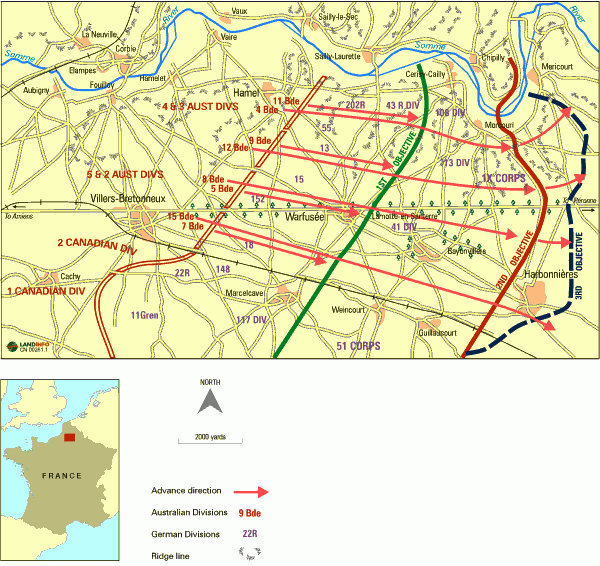The Battle of Amiens, also known as the Third Battle of Picardy, was the opening phase of the Allied offensive which commenced on 8 August 1918. This and later battles became known as The Hundred Days Offensive which led to the end of the war. The plan was for General Rawlinson’s Fourth Army to strike eastwards against German positions won during their earlier Spring Offensive in March and April 1918. It would be a large-scale operation involving an Allied advance by more than 100,000 men supported by massed artillery fire and 340 tanks. The battlefield layout had the British 3rd Corps attacking on the left, the Australian Corps in the centre as the spearhead and the Canadian Corps on the right. Lieutenant General Sir John Monash had taken over command of the Australian Corps on 1 June 1918. The corps consisted of all five Australian divisions under a unified command for the first time on the Western Front. Monash had already made his mark as a corps commander, being the architect of the stunning 93-minute victory at Hamel on 4 July 1918. The attacks conducted by Fourth Army over four days from 8 August were hugely successful. Thousands of German prisoners were taken and the Allies advanced seven miles (11 km) into enemy-held territory, an unprecedented achievement in the war up to that point. German General Erich Ludendorff described the 8th of August as ‘the black day of the German Army’.
Amiens
This listing recalls the Australian contribution to a major offensive battle near the strategically important city of Amiens in northern France in August 1918.



